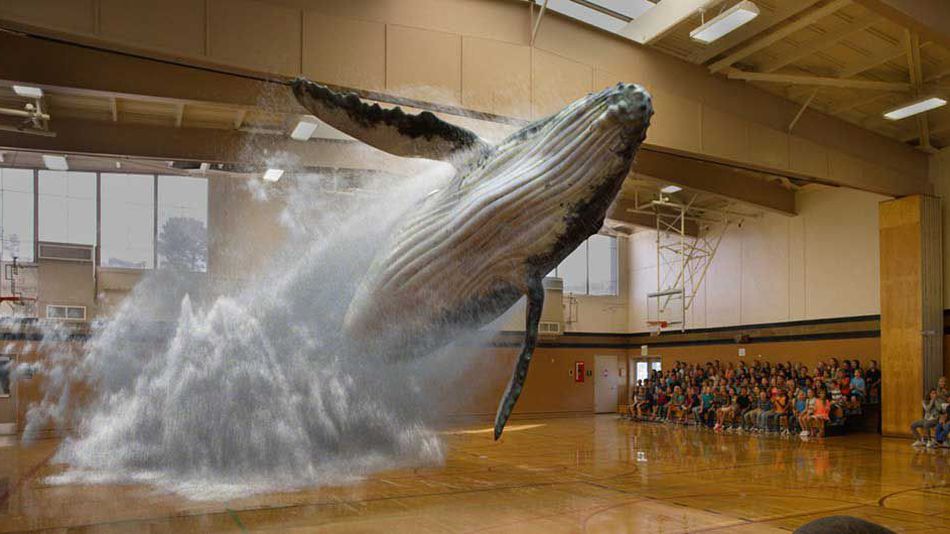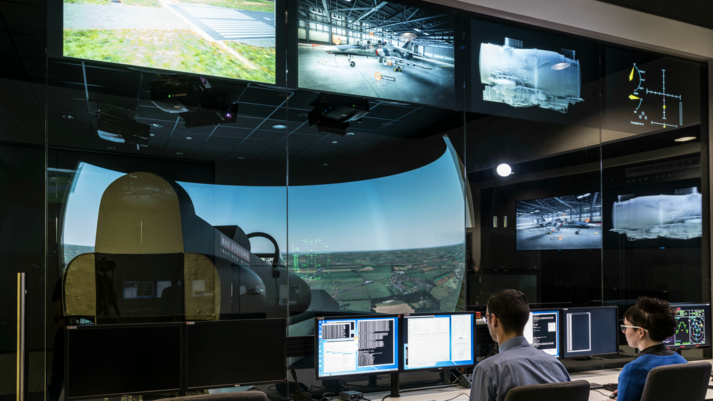8 incredible uses for VR and AR: innovative tech with game-changing applications
AR and VR technology is already changing the world in some truly wondrous ways


Right now it is fair to say that our experiences with VR and AR technology are quite restricted. They're mostly centred around small-scale entertainment experiences such as the AR phenomenon Pokémon Go or the myriad of VR games available on PS VR, HTC Vive Pro and Oculus Go.
However, the applications that VR and AR technologies are currently being adopted into is exploding, and extremely soon the average person will become familiar with using them for far more than games.
Incorporating how people shop, how they travel, how they learn, and how they are entertained across a broad range of mediums, AR and VR tech is ready to take experiences to new, yet unseen heights. Soon, we'll be using this tech on a weekly or even daily basis.
- The 10 most innovative gadgets of the past decade
- Every type of AR and VR explained, from Rift to HoloLens and beyond
Amazingly, the technology is penetrating every sphere of life. Many workplaces are now being transformed by VR and AR. The armed forces, medical industry, manufacturing businesses, commercial and entertainment arenas are all being affected by VR and AR tech.
We feel technology should make people's lives better here at T3.com, and looking at some of these uses of VR and AR, we can't help but be enthused. Here are 8 of the flat-out coolest uses of VR and AR technology we've seen so far…
1. Immersive, AR-enhanced theatre
When you consider that studies from the Arts Council have indicated that there are over 900,000 deaf people who want to engage in the arts at all levels – be that watching films, attending art galleries, or going to the theatre – it seems only common sense that AR technology should be used to enable that.
The National Theatre, in partnership with its innovation ally, Accenture, have been one of the first institutions to recognise this. Using Epson Smart Glasses in sync with the National Theatre's own speech following software and audio description service, visitors can see captions for theatre performances in front of their eyes.
Get all the latest news, reviews, deals and buying guides on gorgeous tech, home and active products from the T3 experts
2. Next-gen VR medical training
In the critical, every-second-counts medical field, new doctors and surgeons need to have years of training in order to be able to make the right decision at the time of crisis – be that in diagnosing what treatment a patient needs or actually operating on them. And what could be better than training that is immersive and just like real life?
This is the thinking behind companies such as Medical Realities harnessing the power of VR to create training simulations for trainee doctors and surgeons, enabling them to enter a virtual operating room and follow procedures step-by-step right there, and to learn more about various expert disciplines and techniques.
3. See before you shop AR product placement
One of the best everyday uses of AR technology currently in use, arguably, can be found in virtual product placement. Many companies now, such as Amazon and its AR View tech, enable you to place virtual versions of the products they sell in your own home.
Simply pick up your smartphone or tablet, select the product you're thinking of buying from the store, then hold the app's viewfinder up to the area of the house you intend to put it in, such as a corner of the living room for a new TV, or a bookshelf for a Bluetooth speaker, and you can drop a small virtual version of it in.
From there, the product can be manipulated, rotated and repositioned as desired, before being fixed in place for a view of it from multiple different angles. It's an ingenious way to see how a product will look in your very own home.
4. Enhancing Top Gun pilot skills with VR simulators

VR and AR innovation isn't confined to more domestic uses, either, with many military uses currently being explored and integrated. A good example is BAE System's Training and Simulation Integration Facility in Warton, England, which is a high-tech £2.3 million facility built specifically to train pilots in virtual reality simulators.
As well as delivering a state-of-the-art jet cockpit and virtual simulator, the facility also delivers an Augmented Reality Environment that uses next-gen technology to create a fully immersive 3D environment for engineers and pilots to enhance their aircraft maintenance and training skills in.
And, while there is no substitute for the real thing, the ability for pilots to train to this level of realism, all the while remaining very firmly on Earth, makes honing their skills easier than ever.
5. 3D installation and service manuals
Augmented reality is also being used in one of the most low-key but, actually, incredibly useful applications for tech enthusiasts – AR manuals.
The concept is simple: instead of supplying a product with a chunky paper instruction manual or a detached, 2D set of slides on a bundled-in CD, you now get an AR app. This, used through a smartphone or tablet, guides you around the product in 3D.
Key parts of the product are revealed and can be explored in extra detail, while basic setup or maintenance operations can be run through, helping new users get to grips with their product in the most immersive, hands-on way possible.
6. Re-telling classic stories

Pokémon Go proved what amazing, immersive potential AR had for video gaming, with millions upon millions of people loving the mixing of real world trekking with virtual pocket monster capturing. However, AR arguably can take this concept even further when you bolt in a quality narrative, too.
For example, Niantic Labs, the creator of Go, is currently working on Harry Potter: Wizards Unite, which is slated to be the "next step in the evolution of AR mobile entertainment".
Not much is known about this very secretive project, but the same addictive AR experience tied into a retelling or expansion of the Harry Potter story would be awesome. Just imagine classic tales retold with the magic of AR thrown in to the mix. It would help bring them to life like never before.
7. Futuristic, AR-enhanced HUDs
AR's main strength is providing extra information or stimulus on top of the real world, and there is nowhere where this is more useful on a day-to-day basis for the average person than when in control of a vehicle. Travelling at high speeds and often in congested, busy environments, getting from A-to-B demands a great deal of planning and information processing.
Augmented reality head-up displays (HUDs) have great potential to make driving a more pleasurable experience, delivering genuinely useful information and stats to the driver all while allowing them to keep their eyes on the road, enhancing safety.
Continental's Head-Up Display system is one of the most advanced currently in use, bringing things like road speed limits, adaptive cruise control distances, lane departure notifications and A-to-B navigation to the vehicle's windscreen.
8. Restaurant experiences like no other
And talking of enhancing everyday experiences, another interesting and innovative application for AR and VR is in the restaurant scene. High-end restaurants such as Sublimotion are now creating unique, multi-sensory dining experiences where multi-course meals are taken to a wondrous new level through the use of augmented and virtual reality.
An example 20-course menus is augmented with 360-degree projections, light installations, props and virtual reality that is designed to draw upon all the senses to enhance the taste of what the diners are consuming. For example, when consuming caviar and oysters, diners can be surrounded by virtual marine life, or when eating miniature sandwiches they can ride on the Orient Express.
This article is part of our Tech Innovation for the Future series, brought to you in association with Honor.

Rob has been writing about computing, gaming, mobile, home entertainment technology, toys (specifically Lego and board games), smart home and more for over 15 years. As the editor of PC Gamer, and former Deputy Editor for T3.com, you can find Rob's work in magazines, bookazines and online, as well as on podcasts and videos, too. Outside of his work Rob is passionate about motorbikes, skiing/snowboarding and team sports, with football and cricket his two favourites.




